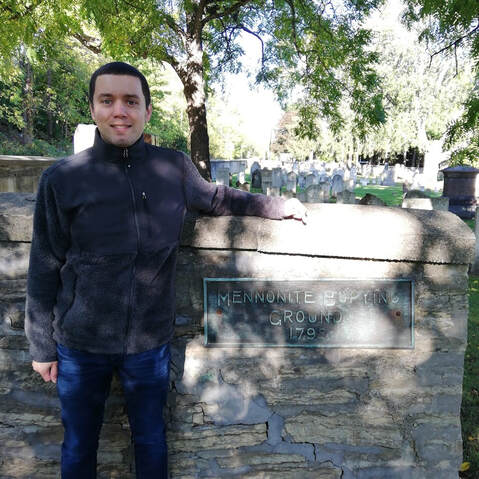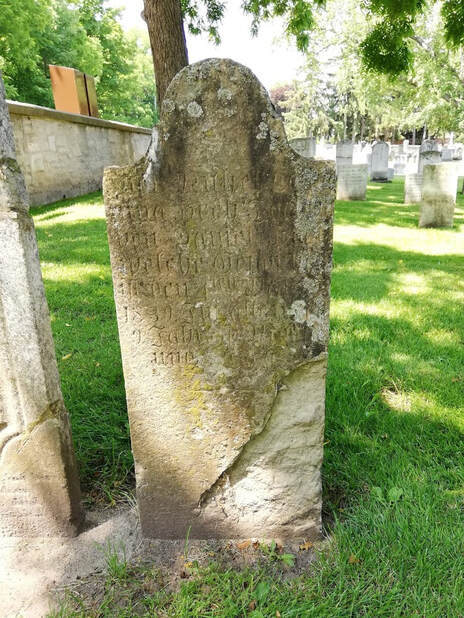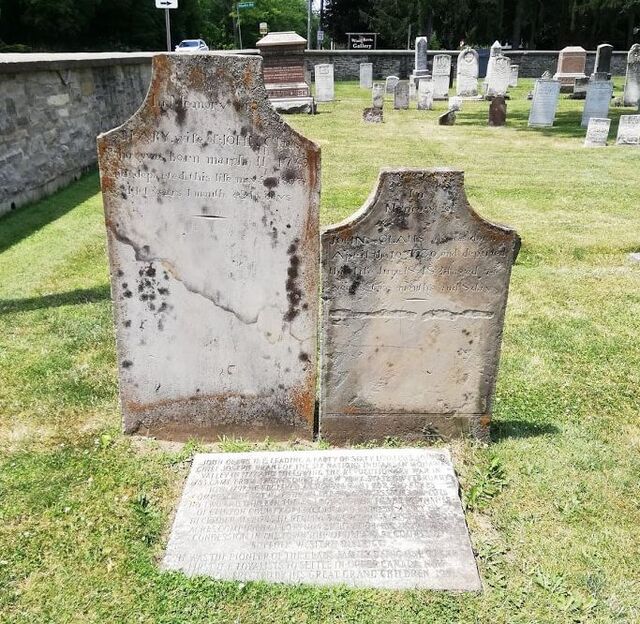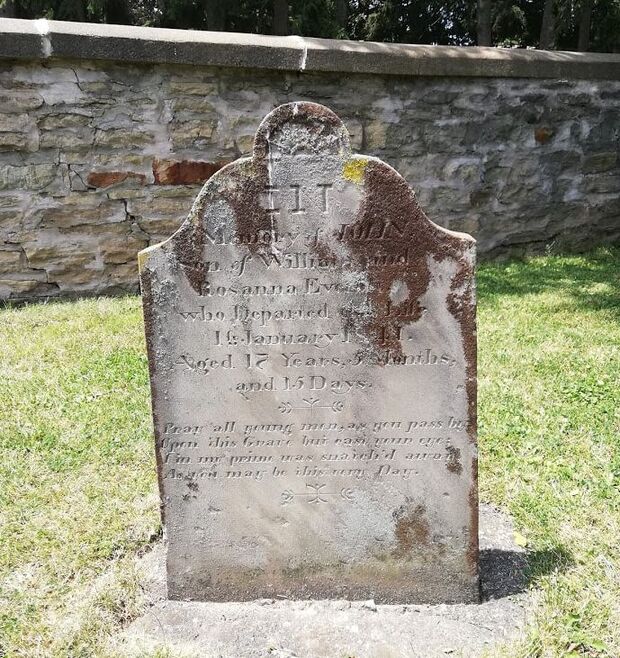|
Last Saturday, October 5th, 2019, Stephanie (who runs Canadian Heritage Matters) and I gave tours of the Vineland Mennonite Burial Ground as part of Doors Open Lincoln. Established in 1798 on the Moyer Farm, it was the earliest major burial ground of Mennonite settlers from Pennsylvania who came north from Bucks County after the American Revolution. Given its age and the survival of many of the oldest stones, it's an excellent site for reading stories in stone of early Upper Canadian history. The Mennonites often came for two reasons. One was that land in Pennsylvania had already become scarce, leading many farmers to seek larger tracts for cheaper prices in the newly established Upper Canada. The second and more important reason related to their religious beliefs. As pacifists who aimed to live according to the teachings of Jesus, many were afraid of religious persecution or being conscripted into the colonial militia in the new United States. Most came seeking a comfortable and peaceful life near "The Twenty" mile creek and surrounding area. Shortly after their arrival beginning in the 1780s, they needed a place to bury their dead. Samuel Moyer, who was the first teacher and an early farmer, donated some of his land in what is now Vineland, Ontario, for that purpose. What makes the Mennonite Burial Ground so interesting is that so many stones from the early 1800s have survived, telling the tale of early life and death in the area. Some of the oldest stones are also carved in German, or in some cases, both English and German, reflecting the Mennonites' Germanic heritage. One stone, for Daniel High, is even carved in fraktur script, a beautiful and difficult script that even with age looks incredibly beautiful. Another interesting feature of the site is that not all of the people buried there were Mennonites. In fact, just a row over from Mennonite pacifists lie John Claus and his wife Mary, United Empire Loyalists who came over as part of a group that included Mohawk Chief Joseph Brant. Unlike the Mennonites, who came from Pennsylvania, Claus and Brant came from Tryon County, New York, after fighting with Butler's Rangers (in Brant's case commanding his own warriors as a British ally), a fierce unit that fought guerrilla-style warfare and terrorized the New York countryside in support of the British Crown. The Claus stones are some of the earliest that have survived, a fact that is easily discernible by the amateur carving of the inscriptions, which have uneven lettering, and in the case of Mary's stone, is slightly slanted. Some of the notable and sad stories include that of Abraham Overholt, who was murdered in 1813, and Ernest Brix, a teenager who was hit by a Grand Trunk Railway train in 1915. There are also numerous stones of women who died at a young age, most often in childbirth, a testament to the particularly precarious nature of women's health at a time when they were expected to birth numerous children without the aid of modern hospitals and medicine. Lastly, the site also has one of the grimmest verses I've come across, for John Evans, who died at just seventeen in 1841: "Pray all young men, as you pass by, Upon this Grave but cast your eye; I in my prime was snatch'd away, As you may be this very Day." That verse, which can be seen with many slight variations in nineteenth century cemeteries, is a Memento Mori, a Latin term which is translated as "Remember that you must die." John Evan's stone certainly causes one to stop and think! We were very happy with the number of interested and engaged visitors who came from Lincoln and beyond to learn about the site. Many left saying things like, "I had no idea how old many of the stones were," or, "I didn't realize all those symbols had different meanings." We tried on every tour to demonstrate that cemeteries are unique and invaluable repositories of a community's history, especially in the case of sites as old as the Mennonite Burial Ground, which existed before written records were consistent and thorough. In some cases, the gravestones are the only evidence we have that a person ever existed. So be sure to go out and visit your local cemetery and see what stories in stone are waiting to be read!
Ps. This post was cross-posted on Canadian Heritage Matters.
0 Comments
Your comment will be posted after it is approved.
Leave a Reply. |




 RSS Feed
RSS Feed